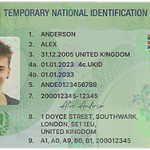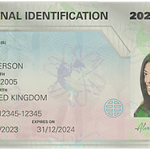Making a fake ID card at home using basic tools is not only an illegal and unethical activity but also fraught with numerous challenges and risks. However, it is important to understand the various aspects related to this topic from an educational perspective, mainly to emphasize the illegality and the difficulties involved, rather than to encourage any form of illegal behavior.
Understanding ID Card Security Features
Modern ID cards, whether they are driver’s licenses, passports, or other forms of identification, are equipped with a plethora of security features. These features are designed to prevent forgery and ensure the authenticity of the document. For example, many ID cards have holographic images. These holograms are created using specialized equipment and techniques that are not available in a typical home setting. They often display complex patterns and images that are difficult to replicate accurately.
Another common security feature is microprinting. Microprinting involves printing extremely small text that is only visible under magnification. This text may contain important information such as the card – holder’s name, identification number, or other security – related details. Replicating microprinting at home with basic tools is nearly impossible as it requires high – precision printing equipment.
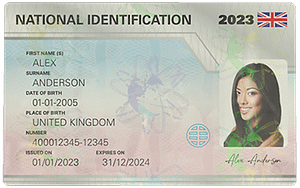
UV (ultraviolet) inks are also widely used in ID card manufacturing. These inks are invisible under normal light but become visible under UV light. They can be used to print security patterns, logos, or other identifying marks. Basic home tools do not include UV ink or the necessary UV lighting equipment to handle such features.
Basic Tools and Their Limitations
Let’s consider the basic tools that one might have at home. A printer is a common household item. However, standard home printers lack the ability to reproduce the high – quality and specialized inks used in ID card printing. The colors and finishes of home – printed images are often noticeably different from those on official ID cards. For instance, the colors may appear duller or have a different hue.
Scissors and a cutting mat can be used to cut the card to size, but achieving the exact dimensions and smooth edges of an official ID card is difficult. Official ID cards are cut with high – precision machinery to ensure uniformity. A home – cut card may have rough edges or be slightly off in size, which can be a giveaway.
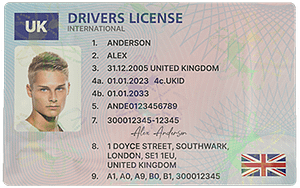
Laminators are sometimes available at home. But the lamination process for official ID cards is carefully calibrated to ensure the security features remain intact and the card has the right thickness and durability. Home laminators may not provide the same quality of lamination, and the lamination film may not be the same as that used for official cards.
The Legal Ramifications of Making Fake ID Cards
Making a fake ID card is a serious crime in most countries and jurisdictions. It is considered fraud and can lead to significant legal consequences. If caught, the person involved can face fines, imprisonment, and a criminal record. For example, in the United States, using or making a fake ID can result in misdemeanor or felony charges depending on the circumstances. The penalties can range from a few hundred dollars in fines to several years in prison.
The legal system takes the issue of fake IDs very seriously because they can be used for a variety of illegal activities such as under – age drinking, identity theft, and evading law enforcement. The use of fake IDs can also undermine the integrity of official identification systems and pose a threat to public safety.
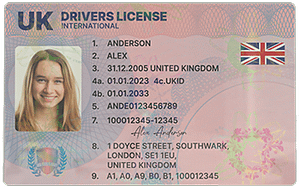
Common Problems and Solutions
Problem 1: Inability to Replicate Security Features
The main problem is that basic home tools cannot replicate the complex security features of official ID cards such as holograms, microprinting, and UV inks. The solution is to understand that these features are there for a reason – to prevent forgery. Instead of attempting to replicate them illegally, individuals should respect the security of official identification systems. If one needs a legitimate ID, they should follow the proper procedures set by the relevant government agencies, such as applying for a new driver’s license or ID card through the official channels.
Problem 2: Poor – Quality Reproduction
Even if one tries to make a simple imitation of an ID card using basic tools like a home printer and scissors, the quality of the reproduction will be poor. The colors may be off, the edges may be rough, and the overall appearance will not match that of an official card. The solution is to avoid any attempts at making fake IDs. If one has a legitimate need for a duplicate or replacement ID, they should contact the appropriate issuing authority and provide the necessary documentation to obtain a proper replacement.
Problem 3: Legal Risks
The legal risks associated with making a fake ID are extremely high. One can face serious criminal charges and long – term consequences such as a criminal record. The solution is to stay away from any illegal activities related to ID forgery. If one is facing difficulties in obtaining a legitimate ID due to lost or stolen documents, they should work with the relevant authorities to resolve the issue in a legal and proper manner. For example, if a passport is lost, one should apply for a new one through the embassy or consulate following the established procedures.
Problem 4: Lack of Knowledge about ID Card Manufacturing
Most people do not have in – depth knowledge about how official ID cards are manufactured. This lack of knowledge can lead to failed attempts at making fake IDs. The solution is to educate oneself about the proper channels for obtaining identification. There are many resources available online and at government offices that provide information on how to apply for different types of IDs, what documents are required, and the steps involved in the process. Instead of trying to make a fake ID out of ignorance, one should seek out this legitimate information.
Problem 5: Ethical Dilemma
Making a fake ID is an unethical act as it involves deception and undermining the integrity of official systems. The solution is to adhere to ethical principles. If one has a legitimate need for identification but is facing difficulties in obtaining it through normal means, they should explore legal and ethical alternatives such as reaching out to social service agencies for assistance or working with the relevant government departments to resolve any issues related to their eligibility for an ID.


